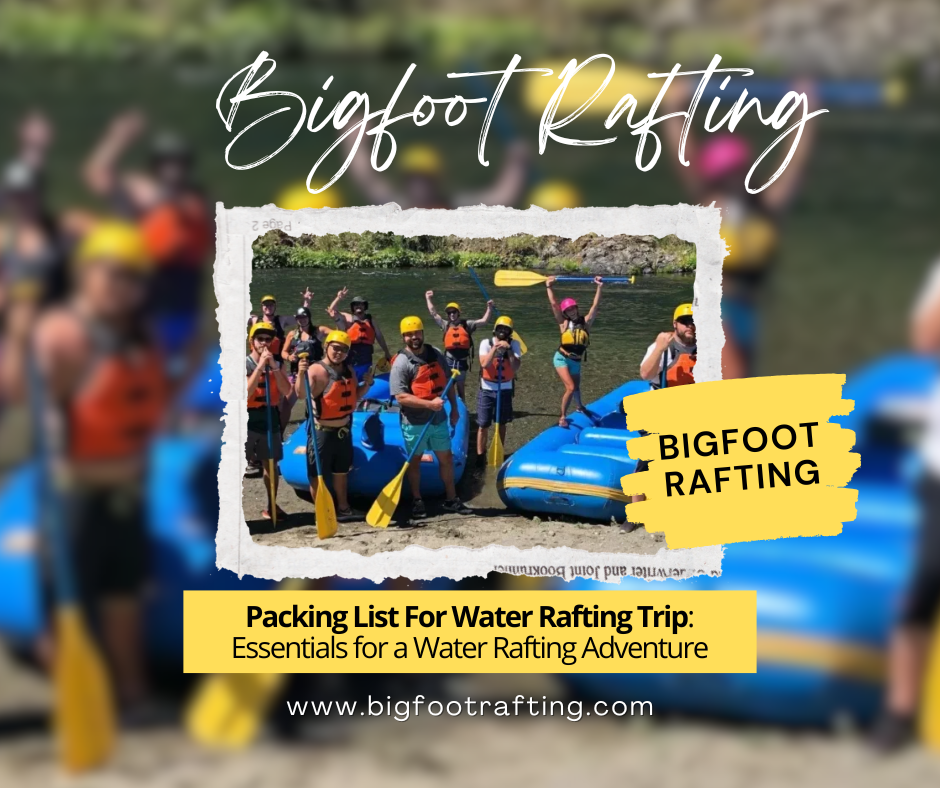Embarking on a water rafting trip is an exhilarating experience that combines adventure with the beauty of nature. Whether you’re a seasoned rafter or a first-timer, packing the right gear is crucial for a safe and enjoyable journey. This comprehensive guide will help you prepare for your rafting adventure, ensuring you have everything you need for a memorable trip.
What to Wear on a Rafting Trip
Choosing the right clothing is essential for comfort and safety on the river. Here’s what to consider and why:
- Quick-Drying Clothing – Stick to lightweight synthetic fabrics such as nylon or polyester that wick moisture and dry fast. Cotton is a poor choice since it soaks up water, stays wet, and can make you feel cold. Quick-dry clothes keep you comfortable and prevent chafing during long stretches on the raft.
- Bathing Suit – A bathing suit works well as a base layer. It can be worn alone on hot days or under a wetsuit or shorts for added coverage. This flexibility makes it an essential piece for both comfort and convenience.
- Long-Sleeved Shirt – A light, long-sleeved shirt can protect you from sunburn and help keep you warm if there’s a breeze. Look for UV-protective fabrics if you’ll be rafting under strong sun.
- Wetsuit or Splash Jacket – For colder rivers or unpredictable weather, these layers help regulate body temperature. A wetsuit insulates against chilly water, while a splash jacket keeps wind and spray from making you cold. Many outfitters provide them, but check ahead to see if you should bring your own.
- River Shoes – Choose closed-toed shoes with a secure heel strap, like sport sandals or neoprene booties. They provide grip on slippery rocks, protect your feet from sharp objects, and stay on in rushing water—unlike flip-flops or slides.
Essential Gear for a Rafting Trip
Packing the right gear ensures you’re safe, prepared, and able to enjoy the ride:
- Life Jacket (PFD) – A personal flotation device is required on every rafting trip. Most rafting companies, including Bigfoot Rafting, provide properly fitted PFDs, so you typically don’t need to bring one yourself. Always wear it securely buckled while on the river.
- Helmet – Protects your head in case of bumps against rocks, paddles, or the raft itself. Like PFDs, helmets are usually supplied by outfitters.
- Dry Bags – Keep valuables and clothing dry. A small bag (10–20 liters) works well for day trips to hold essentials like a phone, sunscreen, and snacks. For multi-day trips, a larger bag can store clothing and camping gear.
- Waterproof Sunscreen – A must-have for long hours under the sun. Choose a reef-safe, high SPF sunscreen that won’t wash off quickly. Don’t forget to reapply often.
- Water Bottle – Staying hydrated is crucial. Opt for a reusable, durable bottle that you can clip to the raft or stow in a dry bag.
- Sunglasses with Retainer Strap – Polarized sunglasses reduce glare off the water, helping you see clearly. Use a floating strap or retainer so they don’t end up lost in the river.
Overnight Rafting Gear List
For trips that extend beyond a single day, a little extra preparation ensures you’ll stay comfortable:
- Tent and Sleeping Bag – Choose lightweight, easy-to-pack camping gear designed for outdoor adventures. A compact sleeping pad adds comfort on rocky or uneven ground.
- Camping Stove and Utensils – Great for preparing meals if your outfitter doesn’t provide food. Even if meals are included, having your own utensils and a lightweight mug can be handy.
- Headlamp – Essential for hands-free light at camp, whether you’re cooking, setting up your tent, or making your way to the riverbank at night.
- Toiletries – Biodegradable soap, a toothbrush, and other personal items help you stay fresh without harming the environment. Don’t forget quick-dry towels.
- Fleece Jacket – Temperatures can drop in the evening, even after a hot day. A fleece provides cozy, lightweight warmth.
Additional Rafting Accessories
These aren’t must-haves, but they can make your trip more enjoyable:
- Camera or Waterproof Phone Case – Capture stunning river views and action shots without worrying about water damage. Some rafters prefer disposable waterproof cameras for simplicity.
- Rain Gear – A lightweight rain jacket or poncho can keep you comfortable if the skies open up unexpectedly.
- Multi-Tool – Useful for quick fixes, cutting rope, or opening food packages. It’s a small item that can come in handy at camp or on the raft.
What Not to Wear When White Water Rafting
Certain clothing and accessories can make rafting uncomfortable or unsafe:
- Jeans or Heavy Fabrics – These soak up water, weigh you down, and take forever to dry. Stick to lightweight, quick-dry materials instead.
- Flip-Flops – They fall off easily, offer no protection, and can be dangerous if you need traction on slippery rocks.
- Loose Jewelry – Rings, bracelets, or necklaces can snag on gear or be lost in the water. It’s best to leave them behind.
Tips for Packing for a Rafting Trip
Keep these simple strategies in mind as you get ready:
- Layering – Dress in layers so you can adjust easily as temperatures change throughout the day.
- Secure Valuables – Store electronics, wallets, and keys in waterproof cases or dry bags to keep them safe.
- Check with Your Outfitter – Many companies, including Bigfoot Rafting, supply safety gear like helmets, PFDs, and sometimes wetsuits. Confirm in advance so you don’t pack unnecessary items.
Prepare with Bigfoot Rafting
By keeping this packing guide in mind, you’ll be ready for an unforgettable adventure with Bigfoot Rafting. From the adrenaline of the rapids to the breathtaking views along the river, the right preparation ensures you can focus on the fun while staying safe and comfortable. Pack smart, trust your guides, and get ready to make memories that will last a lifetime on the water.

